A volcano on Iceland’s Reykjanes Peninsula erupted again on Wednesday, spewing lava and smoke into the air in what officials say is the twelfth eruption in the region since 2021.
Authorities have evacuated families, hotel guests, and tourists from Grindavík, the nearby Blue Lagoon resort, and other surrounding areas as a precaution.
The eruption in the Sundhnúkur volcano on the Reykjanes Peninsula, which began early Wednesday, is the 12th since volcanic activity reawakened in the region in 2021.
According to Iceland’s meteorological office, magma forced through the crust opened a fissure between 700 and 1,000m long.
“(It does) not threaten any infrastructure at this time,” the office said, adding that GPS and deformation data suggest it was a relatively small eruption.
Grindavík, which once housed nearly 4,000 people, was evacuated last year and remains largely empty due to ongoing volcanic risk.
Despite the dramatic lava flows, no disruption to flights at Keflavík airport has been reported.
The eruption is the latest in a growing sequence of volcanic events on the Reykjanes Peninsula, which began when dormant systems were reactivated in 2021 after centuries of silence.
Gas cloud spreading north of volcano and projected to hit airport on Thursday
Imagery from the Icelandic Meteorological Office shows a cloud of sulphur dioxide gas emanating from the volcano is currently being driven north towards the town of Keflavik.
The IMO forecasts that a slight change in wind conditions tomorrow will take the gas cloud directly over Iceland’s main international airport, which is located west of Keflavik.
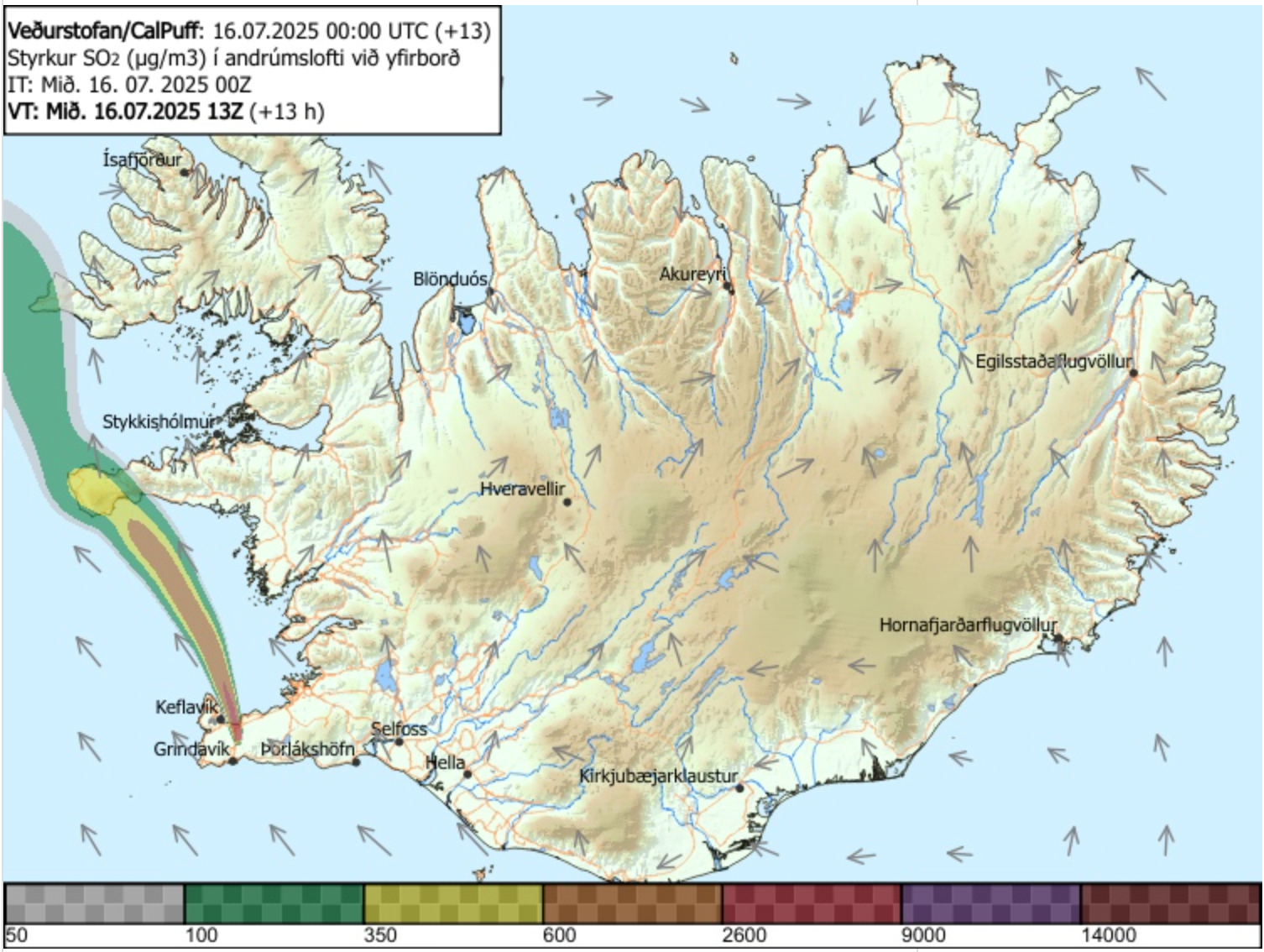
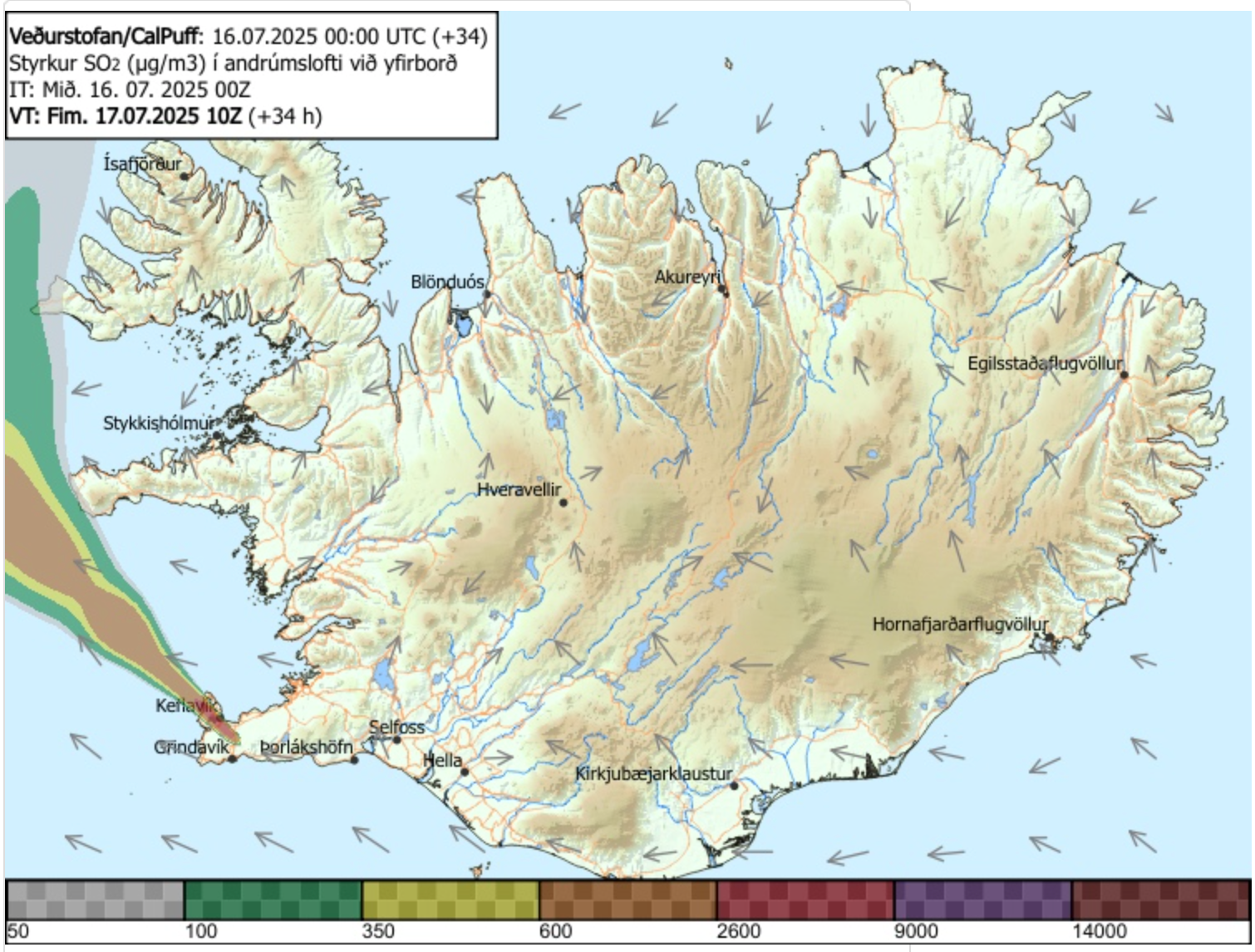
The IMO warned local residents to monitor air quality and move away from the area if they experience any symptoms from the gas cloud.
The most common symptoms from breathing in sulphur dioxide are irritation to the nose and throat, but exposure to high levels can cause nausea, vomiting, stomach pain and corrosive damage to the airways and lungs.
Adam Withnall16 July 2025 13:49
Full story: Iceland volcano erupts opening up 1km-long fissure
A volcano on Iceland’s Reykjanes Peninsula erupted again on Wednesday, spewing lava and smoke in what officials say is the twelfth eruption in the region since 2021.
The eruption prompted fresh evacuations from the nearby town of Grindavík, a luxury hotel, and the popular Blue Lagoon spa, Icelandic authorities said.
The Icelandic Meteorological Office (IMO) said magma pushed through the earth’s crust, opening a fissure estimated to be between 700 and 1,000 metres long.
Stuti Mishra16 July 2025 13:30
Video: Tourists evacuated after Iceland’s Reykjanes Peninsula hit by 12th eruption in four years
Stuti Mishra16 July 2025 12:45
Evacuations ordered in Grindavík
The eruption prompted fresh evacuations from the nearby town of Grindavík. However, the town has been almost empty for months.
Authorities first ordered a full evacuation of the town in November 2023 after seismic activity and land deformation signalled a high risk of magma movement beneath the area.
A fissure eruption in December caused structural damage to roads and buildings. Subsequent eruptions in January and February 2024 led to further destruction, including the collapse of homes and the death of one person due to ground cracking.
Although some residents briefly returned during calmer periods, the area has remained largely off-limits.
Stuti Mishra16 July 2025 12:15
Recent eruptions in Iceland
Today’s eruption near Sundhnúkur crater is the 12th since volcanic activity reawakened on the Reykjanes Peninsula in 2021, ending nearly 800 years of geological silence in the region.Here’s a quick look at the most recent eruptions in the same system:
- Dec 2023: A powerful fissure eruption near Hagafell led to the first full evacuation of Grindavík and triggered widespread ground deformation.
- Jan 2024: Lava breached defences, destroying homes and killing one person in a ground collapse.
- Feb 2024: A short but intense eruption cut off hot-water pipelines, causing major disruption in the region.
- Mar–May 2024: The longest and most voluminous eruption so far, lasting 54 days and producing 35 million cubic metres of lava.
- May–June 2024: Another eruption followed, keeping the region under continuous alert.
- Nov–Dec 2024: Lava reached the Blue Lagoon car park during a fissure event, prompting mass evacuations once again.
Stuti Mishra16 July 2025 11:45
What makes Iceland so volcanically active?
Iceland sits directly on the Mid-Atlantic Ridge, where the North American and Eurasian tectonic plates are pulling apart.
This geological hotspot fuels regular volcanic and seismic activity. The Reykjanes Peninsula, now erupting again, had been dormant for 800 years before reawakening in 2021.
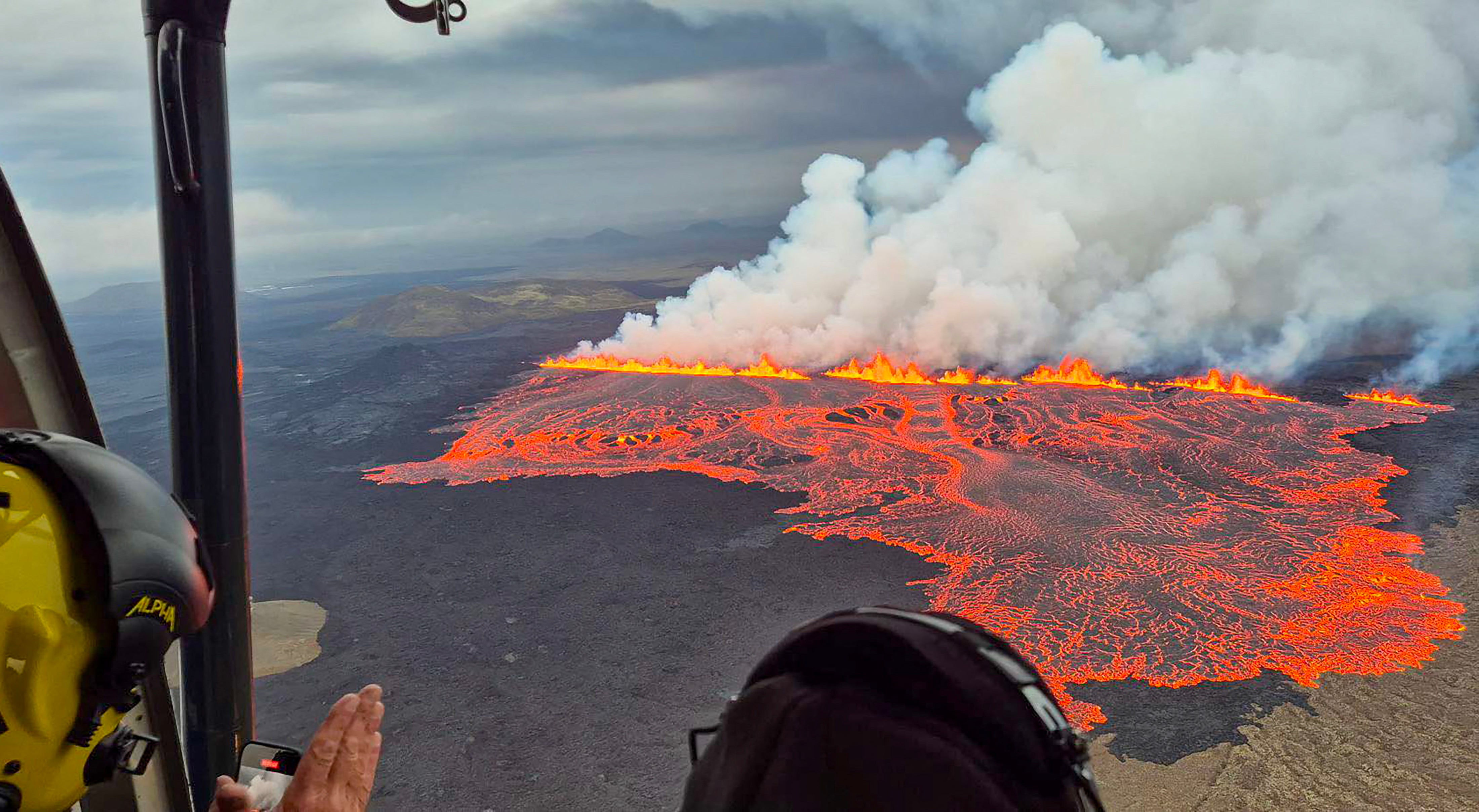
Stuti Mishra16 July 2025 11:15
Photos: Lava and smoke erupting from volcano
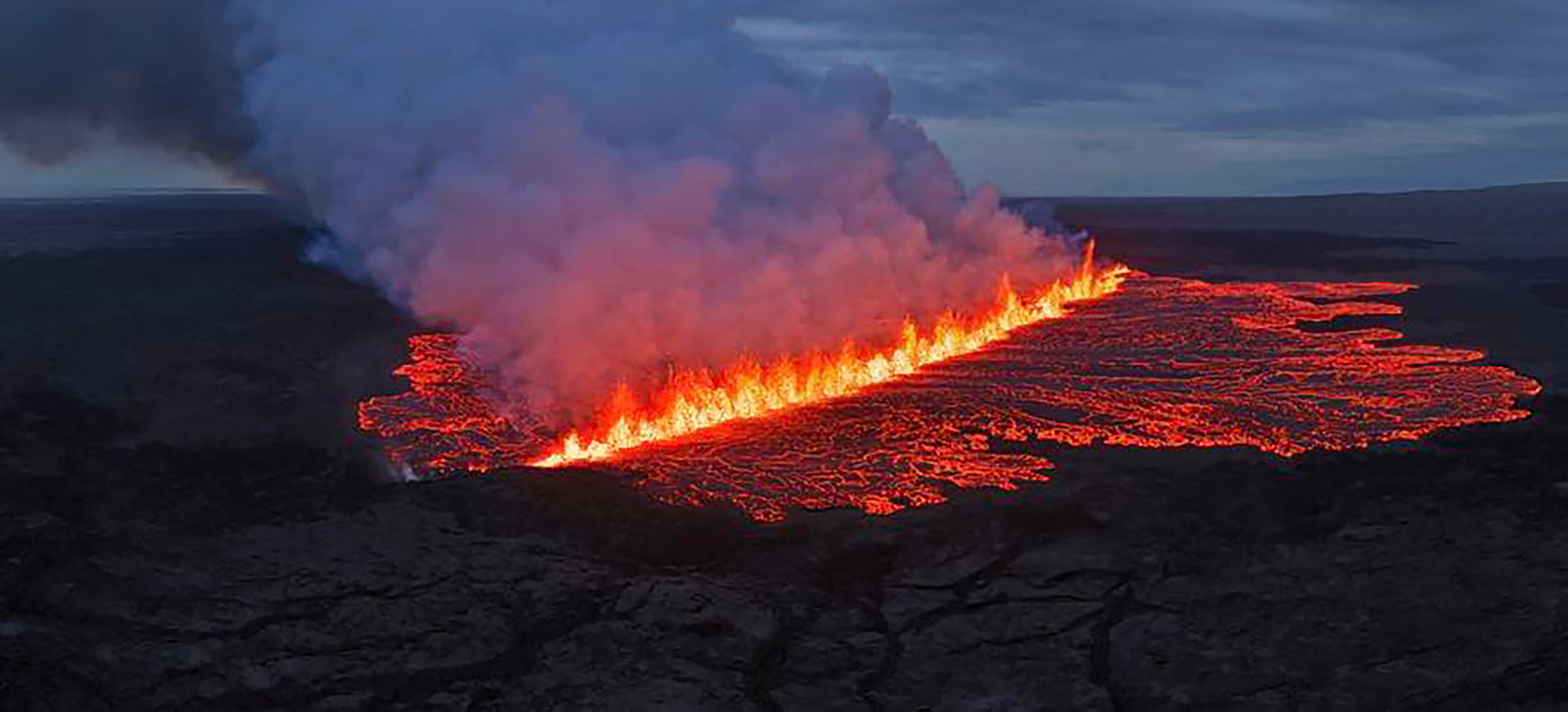
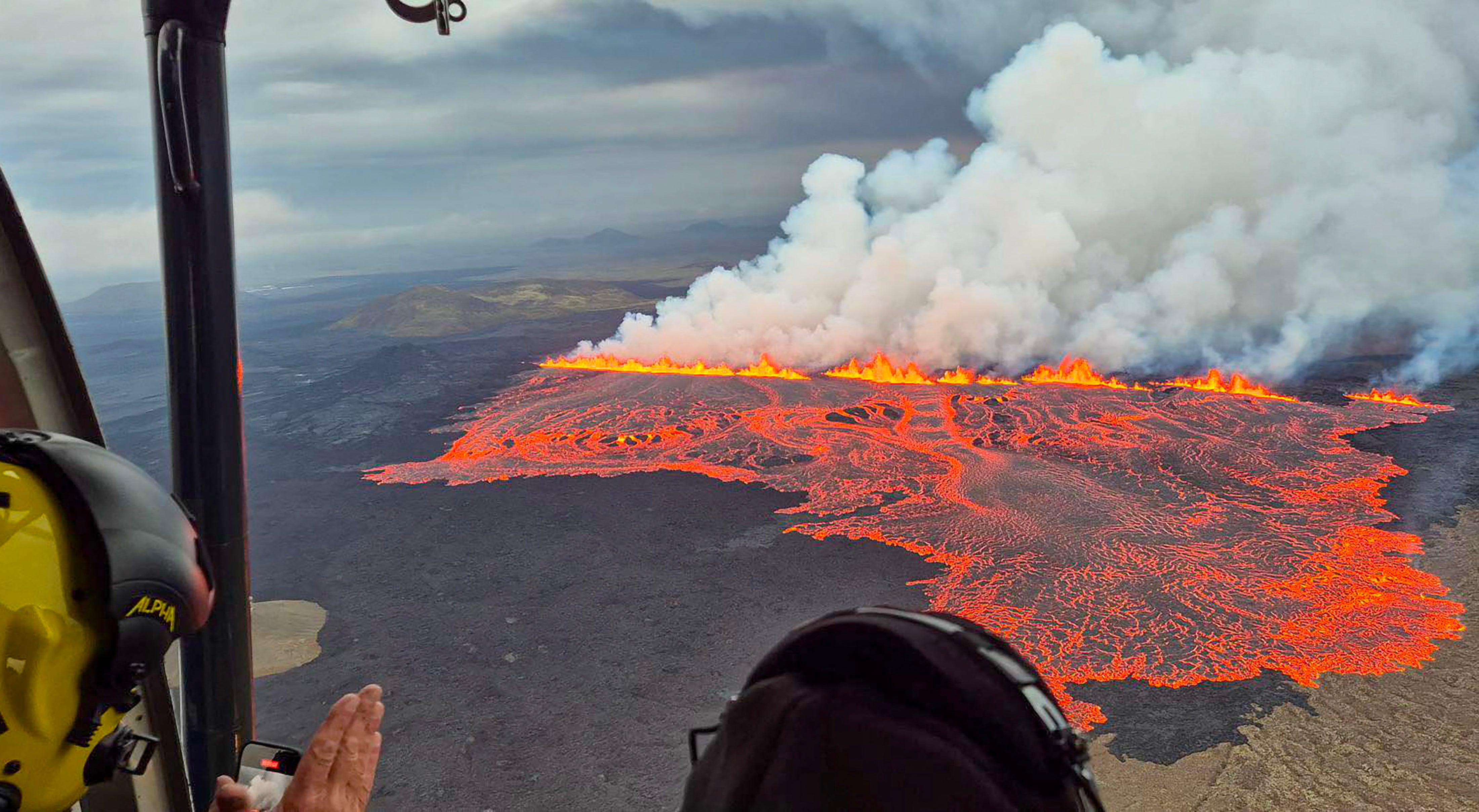
Stuti Mishra16 July 2025 10:51
This is what we know so far about the Sundhnúkur eruption in Iceland
- A volcanic eruption began early on Wednesday near Sundhnúkur crater on the Reykjanes Peninsula, southwest Iceland.
- Lava is flowing from a fissure estimated to be 700–1,000 metres long, according to the Icelandic Meteorological Office (IMO).
- Authorities evacuated Grindavík, the nearby Blue Lagoon resort, and surrounding areas as a safety measure.
- No infrastructure has been damaged so far, and there is currently no threat to populated areas.
- The eruption has not affected flights at Keflavík International Airport, operations are continuing as normal.
- This marks the 12th eruption in the Reykjanes region since 2021, part of a prolonged volcanic cycle.
- Experts warn that similar eruptions may continue in the region over the coming months or years.
Stuti Mishra16 July 2025 10:30
This is the 12th eruption in the region since 2021
The latest eruption is part of a broader pattern of seismic activity that reawakened the Reykjanes Peninsula in 2021 after centuries of dormancy. Since then, the area has seen repeated volcanic events, with fissure eruptions now becoming a near-annual phenomenon.
Experts say Iceland is now in a new volcanic cycle, with magma expected to keep surfacing in the region for years or even decades.

Stuti Mishra16 July 2025 10:10
Current eruption is relatively small, officials say
Iceland’s latest volcanic eruption on the Reykjanes Peninsula is not considered a major event, according to the Icelandic Meteorological Office.
The fissure, located near Sundhnúkur crater, measures about 700 to 1,000 metres long, but officials say the eruption is relatively small, with lava flowing steadily to the southeast, away from critical infrastructure.
“There is no immediate threat to populated areas or key services,” the IMO said, adding that deformation data and GPS readings suggest limited magma output.
Civil defence authorities have evacuated surrounding areas as a precaution, but most of the disruption is localised.
Unlike explosive eruptions that produce large ash plumes, this is a low-ash fissure eruption, meaning it’s unlikely to affect air travel or trigger widespread fallout.
Similar eruptions have occurred on the peninsula repeatedly since 2021 as part of a longer volcanic cycle.

Stuti Mishra16 July 2025 09:52




